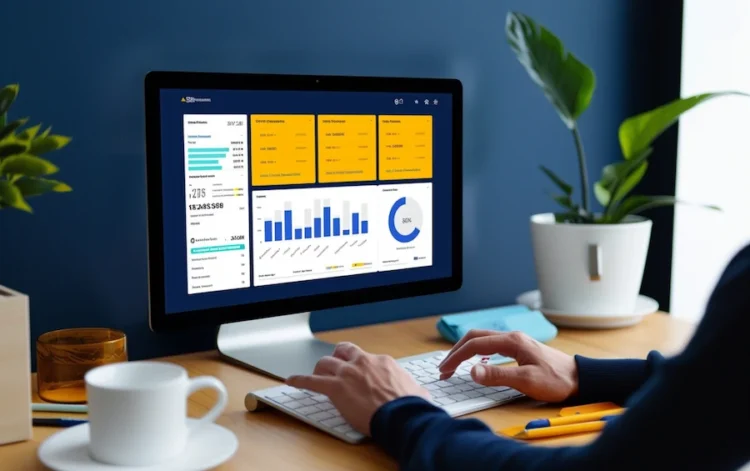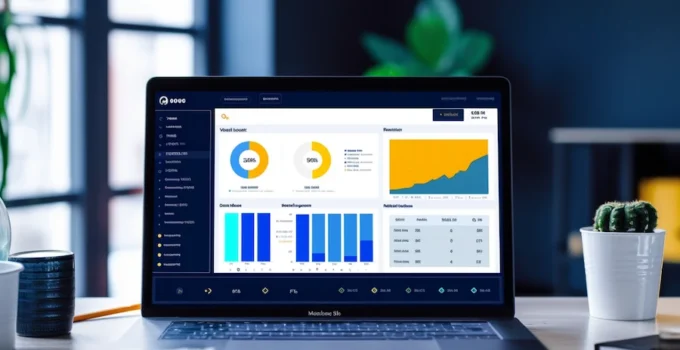Financial reconciliation is a crucial aspect of accounting that ensures records are accurate and consistent. With the dynamic nature of financial transactions, businesses are turning to sophisticated solutions to handle these complex processes.
Reconciliation software is becoming an indispensable tool for finance professionals aiming to increase efficiency and reliability in their workflows. Exploring the multiple advantages this technology presents can provide a compelling argument for its adoption in every finance department. Below, we delve into the specifics of how reconciliation software can revolutionize financial management.
Page Contents
Understanding the Role of Reconciliation Software in Modern Finance

Source: befreeltd.com
Reconciliation solution software simplifies the process of comparing financial records, identifying discrepancies, and resolving them efficiently. By automating tasks traditionally handled manually, it saves time and ensures accurate transaction records, maintaining financial integrity across all accounts. This software allows for continuous reconciliation, enabling businesses to address errors on a daily basis and prevent issues from escalating at period-end.
With customizable features, reconciliation software can adapt to a company’s specific needs, handling tasks from complex algorithmic matching to simple checks. Innovations like AI integration further enhance its capabilities, making the reconciliation process more effective through machine learning and intelligent analytics, as seen with tools like ReconArt.
Enhancing Accuracy and Reducing Errors with Automated Reconciliation
Automated reconciliation software is crucial for financial recording accuracy, as it flags discrepancies for review and minimizes accounting errors. It processes vast amounts of transactions at a speed unattainable by manual efforts, ensuring reliable data matching from various sources. This saves finance professionals time and allows them to focus on strategic tasks. Error reduction directly impacts an organization’s bottom line, as correcting financial errors can be costly.
Automated reconciliation serves as an effective control mechanism, providing businesses confidence in their financial statements. A transparent audit trail is also provided by a consistent and reliable approach to reconciliation, which is crucial during audits or decision-making purposes, enhancing trust in the financial records produced by an organization.
Improving Financial Reporting with Real-Time Data Analysis

Source: solvexia.com
Reconciliation software offers real-time data for informed decision-making in the fast-paced financial landscape. It provides immediate visibility into financial standings, enabling leaders to make strategic responses. The integration of dynamic reporting tools allows for the generation of insights that were once difficult to obtain, highlighting trends, predicting potential issues, and providing comprehensive financial health overviews. This level of analysis is crucial for businesses to maintain a competitive edge.
Real-time analysis enables proactive financial management, allowing organizations to anticipate and mitigate risks before they escalate. This immediacy fosters transparency and accountability within the finance department. Customizable dashboards and reporting mechanisms allow reconciliation software to serve different stakeholder needs, ensuring relevant data is accessible and actionable. This adaptability promotes meaningful engagement with financial data at all levels of the organization.
Streamlining Compliance and Risk Management through Systematic Reconciliation
Reconciliation software is a crucial tool for businesses to ensure compliance with financial regulations. It simplifies the audit-friendly process, ensuring all transactions adhere to set standards and regulations. The software acts as a first line of defense against fraud and financial misrepresentation, detecting and rectifying discrepancies. It also stores historical data, allowing financial teams to predict and mitigate future risks.
This historical insight helps identify patterns that may indicate underlying problems, allowing for early resolution. Reconciliation software can be updated to meet new regulations, ensuring compliance across all financial processes. This flexibility allows organizations to quickly align with new requirements, ensuring their financial practices remain within legal boundaries.
Boosting Productivity and Efficiency in Financial Departments

Source: growthbusiness.co.uk
Reconciliation software automates processes, increasing productivity and allowing financial teams to focus on strategic activities. This shift from transactional to analytical roles allows for more effective use of human resources. Reconciliations take less time, reducing the time taken to complete them, resulting in faster financial closures and increased job satisfaction among finance professionals.
Reconciliation software also offers scalability, allowing businesses to expand without requiring extensive additional staffing. It also improves inter-departmental collaborations and provides timely and informed financial discussions. The ripple effect of increased productivity and efficiency can be felt throughout the entire organization, benefiting all departments.
Overall, the adoption of reconciliation software represents a strategic move towards more agile, informed, and secure financial management practices. Companies that leverage this technology position themselves to flourish in an increasingly complex financial landscape, fortified by robust accuracy, compliance, and efficiency. Streamlined financial processes deliver significant competitive advantages in today’s business world.




